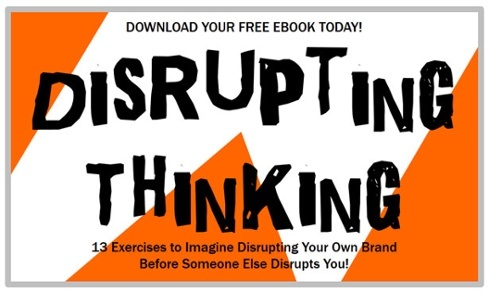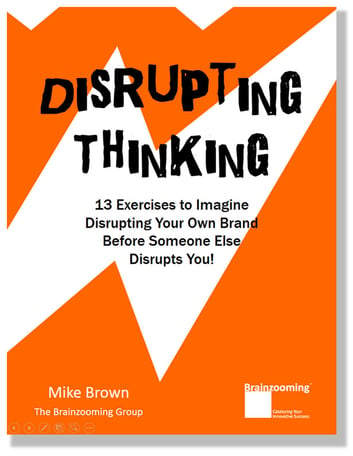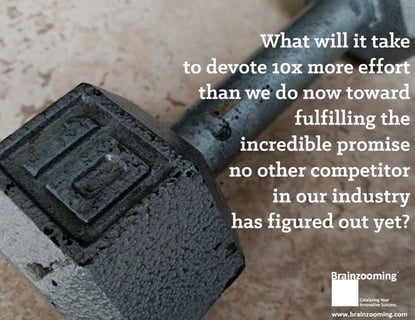J.P. Morgan Chase has announced a new online brokerage platform called, You Invest. The app targets its more than 47 million customers with free brokerage services, including 100 free trades in the first year. Subsequent trades are $2.95, although customers with larger investment levels receive 100 free trades annually—or even unlimited trades.
Free trades from a brand charging $24.95 per trade a year ago?
The strategy change is dramatic and a disruptive business model, but hardly a surprise. Two years ago, the company’s CEO, Jamie Dimon, identified Amazon Prime as reference point for launching a platform offering free services. As Dimon said, “If you're a good account, it's no different than Jeff Bezos doing the $99 Prime and adding services to it.”
The tiered services levels, with additional free options beyond $15,000 and $100,000 in investments, suggest a blatant share growth strategy. Early tests suggest the app is drawing younger, newer traders.
Thinking about a Disruptive Business Model for Your Brand
 via ShutterStock
via ShutterStock
If this is your situation, here are thoughts on exploring the topic through incorporating varied perspectives and imperatives. These can help in taking the first steps toward disruption that will gain an early advantage.
If a Successful Brand Is Disrupting Successfully, Copy Its Disruptive Business Model
As is evident from Jamie Dimon’s comments, J.P. Morgan Chase looked to Amazon Prime as a disruptive business model for its own market. While not every disruptor is successful (and high-flying ones sometimes crash), you can look to those disruptive brands that are currently popular, such as Amazon, Apple, Uber, Airbnb, and Netflix, and see a pattern: create an inviting technology-based platform, provide people a place to behave, and generate seemingly endless data flows from their behaviors. Within the platform, invite other brands to contribute content, products, or other assets to speed the development of a full-fledged and attractive customer platform.
Using this model, explore where you’ll generate revenue. (It likely won’t be by charging current market rates for what your platform delivers.) Consider offering an attractive value package to maximize the amount of time, interest, and focus users devote to the platform. Possibilities include:
- Offering additional services for free or at dramatic discounts (plus incentivizing pricing for those spending more time on your platform)
- Providing a one-stop, never-have-to-go-anywhere else experience
- Securing an upfront annual (or multi-year) financial or share commitment and dropping charges for ongoing activity
- Extending more lenient, flexible customer service policies
- Simplifying the engagement process to one step; two steps at most
Some of these offerings are explicitly price-based. Others simply lower costs for the brand to provide the service or reduce customer challenges. Both can contribute to greater value perceptions and reduce customer motivations to leave the platform for other options.
Where else can you generate revenue? To the extent that your platform is home to customer behaviors, you have data and insights with tremendous potential value. Consider everything Amazon knows about its customers’ search, shopping, and purchase behaviors. Or Facebook, about the personal networks, communication tendencies, and movement patterns of users. Or Uber, about the flow of people in major metropolitan areas. See the value there? That’s where you turn analysts (or data scientists) loose to identify:
- The very best customers to secure with even greater value offerings
- What else to offer customers individually and as a whole
- Opportunities to sell access to other brands (even competitors) that want to market to the platform’s users
Generating additional value and revenue from data allows you to further subsidize the value of the platform’s consumer offering. This grows the platform’s attractiveness, making it tougher to leave.
It’s essentially the give-away-the-razor-and-sell-the-blades model, supercharged with data and technology.
Benefits, Capabilities, and Adjacent Markets
Another approach to imagining a disruptive business model is to consider the opportunity to innovate (and disrupt) based on customer benefits. The starting point for this exploration involves identifying your brand’s capabilities and the benefits you currently deliver. Ideally, you will have a healthy list of benefits from which to explore several paths:
- How else can you deliver these benefits to your current customers with tremendously greater value? (This is a good opportunity to see how a platform model might fit.)
- How can you break into a completely new market and deliver these benefits – whether it involves using current capabilities or new ones?
- How can you imagine automating nearly everything you do to fundamentally change your cost dynamics, allowing you to super-size the benefits and value you deliver?
Each question can surface disruptive possibilities. This is especially true of the second question. Disruptors are often completely new to a market. They freely disrupt BECAUSE they have no vested interest in the industry’s status quo. They approach the market with completely new competitive dynamics.
Remember: These Are Thought Experiments
As mentioned earlier, these are thought experiments. We hope these questions pave the way to help your leadership team think sooner than later about the opportunities and threats involved in trying to adopt a disruptive business model for your brand. - From Inside the Executive Suite





